| Weight | 1 lbs |
|---|---|
| Dimensions | 9 × 5 × 2 in |
| host | rabbit |
| isotype | IgG |
| clonality | polyclonal |
| concentration | 1 mg/mL |
| applications | ICC/IF, WB |
| reactivity | NFkB-p105 (Phospho-Ser893) |
| available sizes | 100 µL |
rabbit anti-NFkB-p105 (Phospho-Ser893) polyclonal antibody 2972
$366.00
Antibody summary
- Rabbit polyclonal to NFkB-p105 (Phospho-Ser893)
- Suitable for: IHC,IF
- Isotype: Whole IgG
- 100 µl
rabbit anti-NFkB-p105 (Phospho-Ser893) polyclonal antibody 2972
| antibody |
|---|
| Tested applications IHC,IHC,ICC/IF |
| Recommended dilutions Immunohistochemistry: use at dilution of 1:50- 1:100. Immunofluorescence: use at dilution of 1:100- 1:200 These are recommended working dilutions. End user should determine optimal dilutions for their applications. |
| Immunogen Peptide sequence that includes aa 891-895 and phosphorylation site of Serine 893 (A- S-S-P-V) derived from human NFkappaB-p105 and conjugated to KLH. |
| Size and concentration 100µL and 1 mg/mL |
| Form liquid |
| Storage Instructions This antibody is stable for at least one (1) year at -20°C. |
| Storage buffer PBS (without Mg2 and Ca2 ), pH 7.4, 150mM NaCl, |
| Purity affinity purified |
| Clonality polyclonal |
| Isotype IgG |
| Compatible secondaries goat anti-rabbit IgG, H&L chain specific, peroxidase conjugated, conjugated polyclonal antibody 9512 goat anti-rabbit IgG, H&L chain specific, biotin conjugated polyclonal antibody 2079 goat anti-rabbit IgG, H&L chain specific, FITC conjugated polyclonal antibody 7863 goat anti-rabbit IgG, H&L chain specific, Cross Absorbed polyclonal antibody 2371 goat anti-rabbit IgG, H&L chain specific, biotin conjugated polyclonal antibody, crossabsorbed 1715 goat anti-rabbit IgG, H&L chain specific, FITC conjugated polyclonal antibody, crossabsorbed 1720 |
| Isotype control Rabbit polyclonal - Isotype Control |
| target relevance |
|---|
| Protein names Nuclear factor NF-kappa-B p105 subunit (DNA-binding factor KBF1) (EBP-1) (Nuclear factor of kappa light polypeptide gene enhancer in B-cells 1) [Cleaved into: Nuclear factor NF-kappa-B p50 subunit] |
| Gene names NFKB1,NFKB1 |
| Mass 105356Da |
| Function FUNCTION: NF-kappa-B is a pleiotropic transcription factor present in almost all cell types and is the endpoint of a series of signal transduction events that are initiated by a vast array of stimuli related to many biological processes such as inflammation, immunity, differentiation, cell growth, tumorigenesis and apoptosis. NF-kappa-B is a homo- or heterodimeric complex formed by the Rel-like domain-containing proteins RELA/p65, RELB, NFKB1/p105, NFKB1/p50, REL and NFKB2/p52 and the heterodimeric p65-p50 complex appears to be most abundant one. The dimers bind at kappa-B sites in the DNA of their target genes and the individual dimers have distinct preferences for different kappa-B sites that they can bind with distinguishable affinity and specificity. Different dimer combinations act as transcriptional activators or repressors, respectively. NF-kappa-B is controlled by various mechanisms of post-translational modification and subcellular compartmentalization as well as by interactions with other cofactors or corepressors. NF-kappa-B complexes are held in the cytoplasm in an inactive state complexed with members of the NF-kappa-B inhibitor (I-kappa-B) family. In a conventional activation pathway, I-kappa-B is phosphorylated by I-kappa-B kinases (IKKs) in response to different activators, subsequently degraded thus liberating the active NF-kappa-B complex which translocates to the nucleus. NF-kappa-B heterodimeric p65-p50 and RelB-p50 complexes are transcriptional activators. The NF-kappa-B p50-p50 homodimer is a transcriptional repressor, but can act as a transcriptional activator when associated with BCL3. NFKB1 appears to have dual functions such as cytoplasmic retention of attached NF-kappa-B proteins by p105 and generation of p50 by a cotranslational processing. The proteasome-mediated process ensures the production of both p50 and p105 and preserves their independent function, although processing of NFKB1/p105 also appears to occur post-translationally. p50 binds to the kappa-B consensus sequence 5'-GGRNNYYCC-3', located in the enhancer region of genes involved in immune response and acute phase reactions. In a complex with MAP3K8, NFKB1/p105 represses MAP3K8-induced MAPK signaling; active MAP3K8 is released by proteasome-dependent degradation of NFKB1/p105. {ECO:0000269|PubMed:15485931, ECO:0000269|PubMed:1740106, ECO:0000269|PubMed:2203531, ECO:0000269|PubMed:2234062, ECO:0000269|PubMed:7830764}.; FUNCTION: [Nuclear factor NF-kappa-B p105 subunit]: P105 is the precursor of the active p50 subunit (Nuclear factor NF-kappa-B p50 subunit) of the nuclear factor NF-kappa-B (PubMed:1423592). Acts as a cytoplasmic retention of attached NF-kappa-B proteins by p105 (PubMed:1423592). {ECO:0000269|PubMed:1423592}.; FUNCTION: [Nuclear factor NF-kappa-B p50 subunit]: Constitutes the active form, which associates with RELA/p65 to form the NF-kappa-B p65-p50 complex to form a transcription factor (PubMed:1740106, PubMed:7830764). Together with RELA/p65, binds to the kappa-B consensus sequence 5'-GGRNNYYCC-3', located in the enhancer region of genes involved in immune response and acute phase reactions (PubMed:1740106, PubMed:7830764). {ECO:0000269|PubMed:1740106, ECO:0000269|PubMed:7830764}. |
| Subellular location SUBCELLULAR LOCATION: [Nuclear factor NF-kappa-B p105 subunit]: Cytoplasm {ECO:0000269|PubMed:1423592}.; SUBCELLULAR LOCATION: [Nuclear factor NF-kappa-B p50 subunit]: Nucleus {ECO:0000269|PubMed:9865693}. Cytoplasm {ECO:0000269|PubMed:9865693}. Note=Association with NFKBIA inhibitor (I-kappa-B), promotes its retention in the cytoplasm in an inactive form (PubMed:9865693). Translocates into the nucleus following NFKBIA degradation (PubMed:9865693). {ECO:0000269|PubMed:9865693}. |
| Structure SUBUNIT: Component of the NF-kappa-B p65-p50 complex (PubMed:1740106, PubMed:7830764). Homodimer; component of the NF-kappa-B p50-p50 complex. Component of the NF-kappa-B p105-p50 complex (PubMed:1423592). Component of the NF-kappa-B p50-c-Rel complex (PubMed:15102766, PubMed:8152812). Component of a complex consisting of the NF-kappa-B p50-p50 homodimer and BCL3 (PubMed:10469655). Also interacts with MAP3K8 (PubMed:15485931, PubMed:9950430). NF-kappa-B p50 subunit interacts with NCOA3 coactivator, which may coactivate NF-kappa-B dependent expression via its histone acetyltransferase activity (PubMed:11094166). Interacts with TSC22D3; this interaction prevents nuclear translocation and DNA-binding (PubMed:11468175, PubMed:12393603). Interacts with SPAG9 and UNC5CL (PubMed:14743216, PubMed:14769797). NFKB1/p105 interacts with CFLAR; the interaction inhibits p105 processing into p50 (PubMed:13679070). NFKB1/p105 forms a ternary complex with MAP3K8 and TNIP2 (PubMed:15169888). Interacts with GSK3B; the interaction prevents processing of p105 to p50 (PubMed:12871932). NFKB1/p50 interacts with NFKBIE (PubMed:9315679). NFKB1/p50 interacts with NFKBIZ (By similarity). Nuclear factor NF-kappa-B p50 subunit interacts with NFKBID (By similarity). Directly interacts with MEN1 (PubMed:11526476). Interacts with HIF1AN (PubMed:17003112). Interacts with FEM1A; interaction is direct (By similarity). {ECO:0000250|UniProtKB:P25799, ECO:0000269|PubMed:10469655, ECO:0000269|PubMed:11094166, ECO:0000269|PubMed:11468175, ECO:0000269|PubMed:11526476, ECO:0000269|PubMed:12393603, ECO:0000269|PubMed:12871932, ECO:0000269|PubMed:13679070, ECO:0000269|PubMed:1423592, ECO:0000269|PubMed:14743216, ECO:0000269|PubMed:14769797, ECO:0000269|PubMed:15102766, ECO:0000269|PubMed:15169888, ECO:0000269|PubMed:15485931, ECO:0000269|PubMed:17003112, ECO:0000269|PubMed:1740106, ECO:0000269|PubMed:7830764, ECO:0000269|PubMed:8152812, ECO:0000269|PubMed:9315679, ECO:0000269|PubMed:9950430}. |
| Post-translational modification PTM: Generation of the NF-kappa-B p50 (Nuclear factor NF-kappa-B p50 subunit) transcription factor takes place both cotranslationally and post-translationally via non-mutually exclusive mechanisms (PubMed:10970863, PubMed:25860612, PubMed:8628291, PubMed:9529257). A cotranslational processing allows the production of both p50 and p105 (Nuclear factor NF-kappa-B p105 subunit) from a single NFKB1 mRNA (PubMed:10970863, PubMed:8628291, PubMed:9529257). While translation occurs, the particular unfolded structure after the GRR repeat region acts as a substrate for the proteasome, promoting degradation of the C-terminus (PubMed:10970863, PubMed:9529257). The GRR acts as a proteasomal 'stop signal', protecting the region upstream of the GRR from degradation and promoting generation of p50 (PubMed:10970863, PubMed:9529257). It is unclear if limited proteasome degradation during cotranslational processing depends on ubiquitination (PubMed:10970863, PubMed:9529257). NF-kappa-B p50 is also generated post-translationally following ubiquitination by the KPC complex, leading to limited processing by the proteasome downstream of the GRR region, thereby generating p50 (PubMed:25860612). {ECO:0000269|PubMed:10970863, ECO:0000269|PubMed:25860612, ECO:0000269|PubMed:8628291, ECO:0000269|PubMed:9529257}.; PTM: [Nuclear factor NF-kappa-B p105 subunit]: Phosphorylation at the C-terminus by IKBKB/IKKB acts as a signal for ubiquitination and promotes either complete degradation or processing to generate the NF-kappa-B p50 (Nuclear factor NF-kappa-B p50 subunit) (PubMed:10835356, PubMed:11158290, PubMed:11297557, PubMed:12482991, PubMed:14673179, PubMed:25860612, PubMed:8626394). Phosphorylation at Ser-903 and Ser-907 primes p105 for proteolytic processing in response to TNF-alpha stimulation (PubMed:12871932). Phosphorylation at Ser-923, Ser-927 and Ser-932 are required for BTRC/BTRCP-mediated ubiquitination and proteolysis (PubMed:10835356, PubMed:11158290, PubMed:11297557, PubMed:12482991, PubMed:14673179). Phosphorylation at Ser-927 is also required for ubiquitination by the KPC complex and limited processing to generate NF-kappa-B p50 (Nuclear factor NF-kappa-B p50 subunit) (PubMed:25860612). {ECO:0000269|PubMed:10835356, ECO:0000269|PubMed:11158290, ECO:0000269|PubMed:11297557, ECO:0000269|PubMed:12482991, ECO:0000269|PubMed:12871932, ECO:0000269|PubMed:14673179, ECO:0000269|PubMed:25860612, ECO:0000269|PubMed:8626394}.; PTM: [Nuclear factor NF-kappa-B p105 subunit]: Polyubiquitinated at multiple Lys residues in the C-terminus (PubMed:11158290, PubMed:14673179, PubMed:25860612). Polyubiquitinated by the SCF(FBXW11) and SCF(BTRC) complexes following phosphorylation at Ser-923, Ser-927 and Ser-932, leading to its complete degradation (PubMed:11158290). In contrast, polyubiquitination by the KPC complex following phosphorylation at Ser-927 leads to limited proteosomal processing and generation of the active NF-kappa-B p50 (Nuclear factor NF-kappa-B p50 subunit) (PubMed:25860612). {ECO:0000269|PubMed:11158290, ECO:0000269|PubMed:14673179, ECO:0000269|PubMed:25860612}.; PTM: S-nitrosylation of Cys-61 affects DNA binding. {ECO:0000269|PubMed:11327828, ECO:0000269|PubMed:8710491}.; PTM: The covalent modification of cysteine by 15-deoxy-Delta12,14-prostaglandin-J2 is autocatalytic and reversible. It may occur as an alternative to other cysteine modifications, such as S-nitrosylation and S-palmitoylation. {ECO:0000269|PubMed:11466314}. |
| Domain DOMAIN: The C-terminus of p105 might be involved in cytoplasmic retention, inhibition of DNA-binding, and transcription activation. {ECO:0000269|PubMed:1423592}.; DOMAIN: Glycine-rich region (GRR) is a critical element in the generation of p50 (Nuclear factor NF-kappa-B p50 subunit) by acting as a proteasomal 'stop signal', which leads to limited proteasomal degradation of the C-terminus, while generating p50. {ECO:0000269|PubMed:8628291, ECO:0000269|PubMed:9529257}. |
| Involvement in disease DISEASE: Immunodeficiency, common variable, 12, with autoimmunity (CVID12) [MIM:616576]: A primary immunodeficiency characterized by hypogammaglobulinemia and recurrent bacterial infections. About half of patients develop autoimmune features, including cytopenia, as well as generalized inflammation and lymphoproliferation manifest as lymphadenopathy or hepatosplenomegaly. {ECO:0000269|PubMed:26279205}. Note=The disease is caused by variants affecting the gene represented in this entry. |
| Target Relevance information above includes information from UniProt accession: P19838 |
| The UniProt Consortium |
Data
| No results found |
Publications
| pmid | title | authors | citation |
|---|---|---|---|
| We haven't added any publications to our database yet. | |||
Protocols
| relevant to this product |
|---|
| Western blot IHC ICC |
Documents
| # | SDS | Certificate | |
|---|---|---|---|
| Please enter your product and batch number here to retrieve product datasheet, SDS, and QC information. | |||
Only logged in customers who have purchased this product may leave a review.
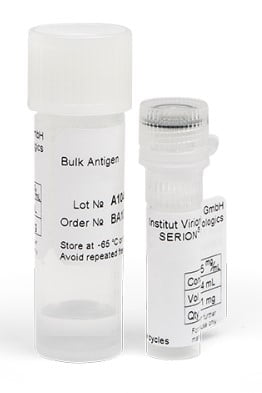
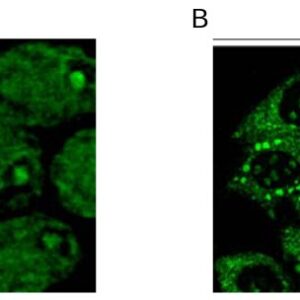
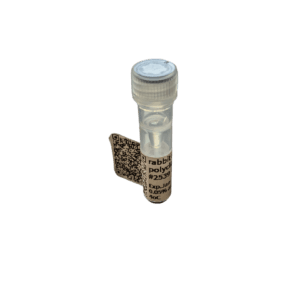
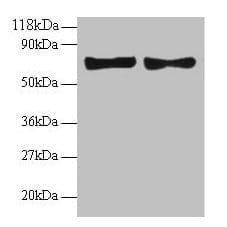
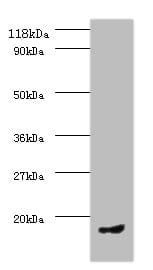

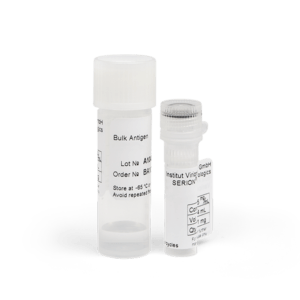
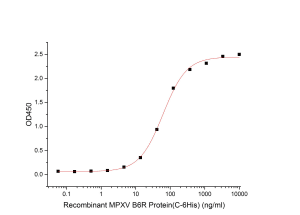
Reviews
There are no reviews yet.